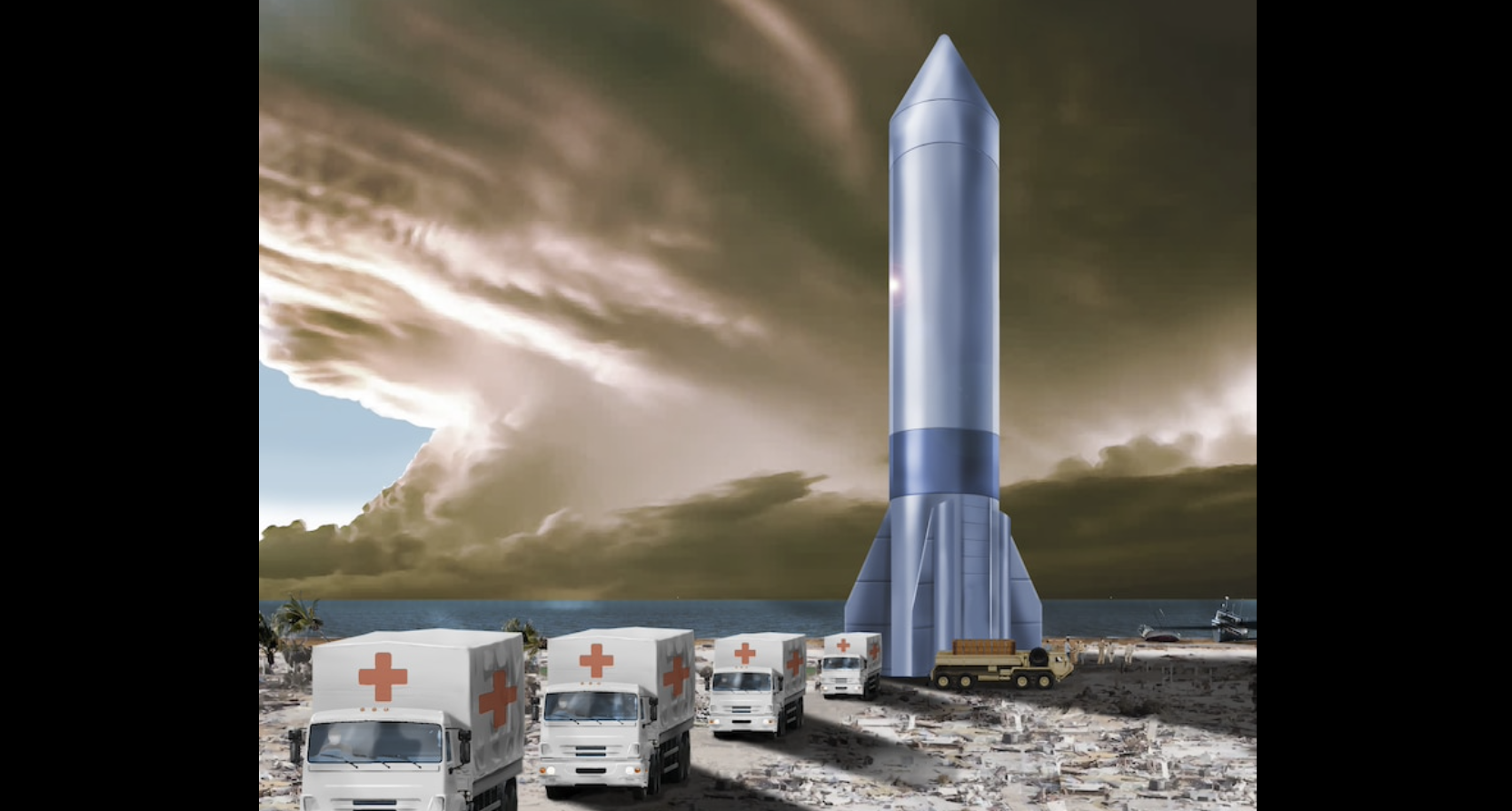Products You May Like
Program manager Greg Spanjers: ’We don’t see SpaceX as being the only viable provider of this capability’
WASHINGTON — U.S. Air Force officials on June 4 expressed enthusiasm about the possibility that commercial space vehicles one day could be used to ship supplies around the world.
“This never really made sense in the past” but now it does, said Greg Spanjers, manager of the rocket cargo program, a new effort to investigate how the military might be able to transport massive loads of supplies aboard commercial rockets.
The Air Force is so confident in the future capabilities of commercial rockets that it designated rocket cargo as one of its so-called Vanguard programs. This is a special designation for technologies that the Air Force believes can transition from science project to actual operations. The Air Force in its budget proposal for fiscal year 2022 is seeking $47.9 million for rocket cargo.
The plan is to figure out what it would take to load military cargo containers into 30-to-100 ton class rockets. The Air Force’s C-17 cargo plan today can move 100 tons. Why use rockets? “Fundamentally, because a rocket can get all the way around the planet in 90 minutes, and an airplane cannot,” Spanjers told reporters on Friday in a video teleconference.
The Pentagon since the dawn of spaceflight has been intrigued by the possibility of moving supplies via rockets but it was never technologically or economically viable, he said.
What is different now is the emergence of privately funded space launch vehicles with much higher capacity and lower price points, said Spanjers. “We’re doing it now because it looks like technology may have caught up with a good idea.”
Maj. Gen. Heather Pringle, commander of the Air Force Research Laboratory, said AFRL and the U.S Space Force will collaborate on the rocket cargo project. She said it could take several years of research and experimentation before rocket cargo can become operational. “This newest Vanguard has the support of the entire Department of the Air Force,” Pringle said.
“Once realized, rocket cargo will fundamentally alter the rapid logistics landscape, connecting materiel to joint warfighters in a fraction of the time it takes today,” Chief of Space Operations Gen. John Raymond said in a statement. “In the event of conflict or humanitarian crisis, the Space Force will be able to provide our national leadership with an independent option to achieve strategic objectives from space.”
It’s not just SpaceX
Spanjers was asked repeatedly by reporters to identify what commercial launch vehicles besides SpaceX’s Starship could possible meet the rocket cargo requirements.
“We don’t see SpaceX as being the only viable provider of this capability,” he said, declining to name other companies. Spanjers suggested that any company developing lunar lander vehicles for NASA could adapt them so they could land in austere terrains on Earth and drop off cargo.
The launch vehicles would have to go into an orbital or a suborbital trajectory to bring the payload back down and land it, Spanjers said. “There are multiple companies that have that technological capability today, not just SpaceX.”
There are of course still many questions to be answered over the next several years as experiments unfold, he said. “We have whiteboards full of ideas but we clearly can’t do this today and that’s why AFRL is investing in this early on,” Spanjers added. “We know there’s a thousand issues we need to dig into. We just think that based on the technology advances, it’s time for us to invest some money and start getting after it, and seeing what we can turn this into.”
AFRL plans to issue a solicitation to the industry “in the very near future,” he said. “We’re not asking for specific things, we’re describing the mission and leaving a pretty wide open sheet of paper for commercial industry to come back and give us ideas.”
